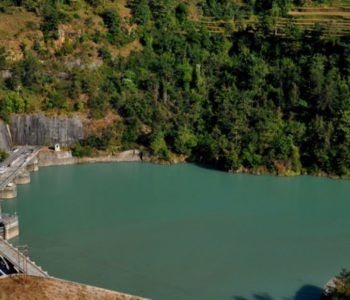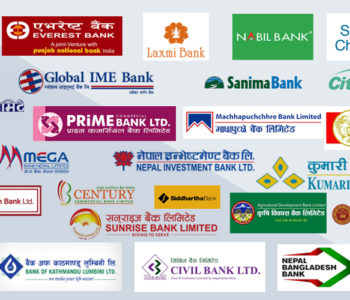Nepal’s central bank champions peer-to-peer lending and crowdfunding for financial revolution

KATHMANDU: In a groundbreaking move, Nepal Rastra Bank (NRB) has recently released a comprehensive study report, shedding light on the mobilization of alternative financial resources. With the issuance of the ‘Consultative Document on Peer to Peer Lending and Crowdfunding,’ NRB aims to spearhead financial inclusivity, especially benefiting startups and small to medium-sized enterprises (MSMEs) grappling with credit concentration issues in Nepal.
Alternative Financing Gains Momentum
The study recognizes the escalating significance of alternative financial resources, driven by the rapid emergence of financial technologies. These alternatives offer unparalleled flexibility, rapid fund access, and a broader array of funding services. Notably, web-based lending platforms, commonly known as Peer-to-peer lending (P2P), have played a pivotal role in empowering individuals and small businesses to transact without being tethered to traditional financial institutions.
Operational Modalities and Models
Diverse operational models within P2P lending and crowdfunding are transforming global financial landscapes. Debt-based and equity-based models, along with submodels like marketplace lending, balance sheet lending, and invoice lending, provide a robust foundation for these financial innovations. P2P platforms predominantly operate under debt-based models, while crowdfunding ventures flourish under equity-based frameworks.
Fintech’s Influence and Regulatory Landscape
The rise of fintech has spurred innovations in P2P lending and crowdfunding, prompting regulators and financial institutions worldwide to reevaluate traditional financial intermediation. NRB’s policy provisions underscore the shift toward a cashless society, embracing digital innovation and new technologies within the financial ecosystem.
Countries globally exhibit a significant departure in regulatory provisions for P2P lending. While Asian nations, including China, Malaysia, and Indonesia, enforce a high degree of regulations, European counterparts like France, Germany, and Italy lean towards imposing banking regulations. Despite the differences, there is a unanimous consensus on the necessity for regulations on these emerging platforms, often led by central banks and financial services commissions.
Risks, Preconditions, and the P2P Potential
Existing literature delves into the effects and risks associated with P2P lending and crowdfunding. P2P lending has witnessed a surge in rural areas with sparse banking channels, while city areas with competitive banking remain relatively unaffected. These platforms tend to thrive in countries facing financial crises, with underserved populations and undercapitalized banks. However, the risk profile of P2P platforms, characterized by not taking credit risk on their balance sheet, necessitates the fulfillment of preconditions for effective functioning.
Preconditions such as credit scoring, credit histories, asset ownership, current debts, debt servicing to income ratio, employment information, and the number of bank accounts are essential for accurate borrower assessment and risk reduction. Failure to meet these preconditions poses inherent risks to the entire financial system, requiring a careful approach to platform operations.
Financial Inclusion in Nepal: Opportunities and Challenges
The study anticipates that P2P platforms can play a pivotal role in expanding financial inclusion in Nepal. Rural areas and MSMEs, traditionally underserved by banks and financial institutions, stand to benefit from easier access to credit. However, challenges such as developing financial infrastructure and limited availability of disaggregated financial information pose potential obstacles. There’s a concern that borrowers deemed unfit for traditional loans may find easy access through P2P platforms, raising questions about investor protection and necessitating the right regulatory framework.
Debt-Based Model: A Viable Option for Nepal
The Fractional Matchmaking P2P Plan (FMPP) emerges as a suitable debt-based model for Nepal, aiming to minimize investor risk by diversifying funds to the smallest extent possible. The study emphasizes the importance of directing P2P platform financing towards the productive sector, with a primary focus on startups and MSMEs.
In-depth Analysis and Global Context
The study provides a comprehensive analysis of P2P lending models, country practices, and the potential relevance of P2P lending and crowdfunding platforms in Nepal. The impact of technology and its integration into financial innovations has disrupted traditional financial ecosystems globally, prompting regulators and financial institutions to adapt.
Countries globally have taken a vigilant approach towards fintech innovations, formulating regulations to manage emerging risks. Regulatory frameworks for P2P lending in Asia, including South Korea, Malaysia, India, China, Indonesia, and Thailand, indicate a clear directive on capital requirements and borrowing limits. However, variations in the minimum paid-up capital requirement underscore the evolving nature of these platforms.
Infrastructure Challenges in Nepal
The limited financial infrastructure in Nepal poses challenges to the effectiveness of P2P lending. Highly disaggregated information about borrowers, including credit history, demographic and community characteristics, and centralized Know Your Customer (KYC) data, is crucial for making informed credit decisions. The success of P2P lending is directly tied to the availability of borrower information, making it imperative to address underdeveloped financial infrastructure hindering the growth of P2P lending in Nepal.
Regulatory Framework and Investor Trust
P2P lending being a relatively new concept in Nepal, the study emphasizes the need for strict vigilance, stringent monitoring compliance, and robust supervisory capability. The limited availability of disaggregated borrower information in Nepal necessitates a well-designed regulatory framework, considering risks of adverse selection, fraud, and money laundering. Such a framework should include investment and borrowing limits, providing directives on capital requirements to safeguard the interests of investors.
Looking Ahead: The Way Forward for Nepal
To align with global financial developments and promote alternative sources of finance, Nepal must:
– Develop a legal framework by amending relevant Acts and create a licensing policy for P2P lending.
– Build financial infrastructure, including a credit scoring system and unique identifiers for individuals.
– Design regulatory policies for P2P lending, beginning with a phased approach to understand demand and risks.
– Evaluate feedback on the consultative document from stakeholders, considering technological advancements and P2P knowledge.
As Nepal charts its course towards embracing new forms of financial intermediation, NRB’s visionary approach sets the stage for a dynamic financial future. Striking a balance between regulatory oversight and fostering innovation will be crucial to harness the potential benefits of P2P lending and crowdfunding in Nepal’s evolving financial landscape.












Facebook Comment